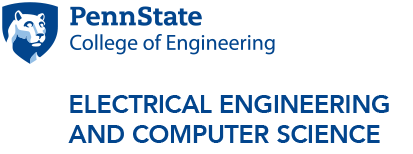EE Colloquium: Manipulating Molecules with Strong Light-Matter Coupling
Abstract: The interaction of organic semiconductors with confined light fields offers one of the easiest means to tune their material properties. In the regime of strong light-matter coupling, semiconductor exciton and cavity photon states hybridize to form exciton-polaritons. In organic systems these light-matter hybrids are tuneably separated by as much as 100’s of meV from the parent exciton, enabling radical alteration of the energetic landscape. The effects of strong coupling can be profound, with reports of long-range energy transfer, enhanced carrier mobility and altered chemical reactivity. Theoretical work is increasingly focused on the potential of polaritons to manipulate electronic dynamics in the excited state, but experimental realisation has proved challenging. We have recently demonstrated the ability to manipulate triplet photophysics in singlet exciton fission materials in the strong coupling regime [1]. Within microcavities, we dramatically enhance the emission lifetime and increase delayed fluorescence by >100%, which we attribute of direct transfer from a reservoir of fully ‘dark’ triplet pairs to the bright polaritons – providing new insights into the interactions between polaritons and dark electronic states. Indeed, with this approach we can create entirely new radiative pathways, turning completely dark states bright and opening new scope for microcavity-controlled materials.
Polariton-enhanced delayed emission. The exciton dynamics within the organic semiconductor active layer produce a large reservoir of triplet-pair states, formally dark but linked to bright S1 by a pathway of static state mixing and dynamic exchange. In the strong-coupling regime, this mixing process results in a new channel for light emission, originating from long-lived dark states.
[1] Polak et al., Chemical Science 2020, 11, 343-354
Biography: Andrew Musser completed his PhD at the University of Cambridge with Richard Friend, using ultrafast spectroscopy to study the mechanism of singlet fission in polyenes and molecular solutions. In a subsequent post-doc in the Friend group he extended his fission studies into covalent dimers and the ultrafast nuclear dynamics that drive the process. Moving to the University of Sheffield in 2016 to work with Jenny Clark and David Lidzey, Andrew increasingly focused on understanding the nature of the triplet-pair state central to singlet fission and triplet fusion. He joined the Chemistry & Chemical Biology faculty at Cornell in July 2019 as an assistant professor. There, his ‘Light-Matters’ group explores the potential of polaritons to manipulate the behaviour of triplet-pair states and control bulk material properties through strong light-matter interactions.
Event Contact: Chris Giebink



